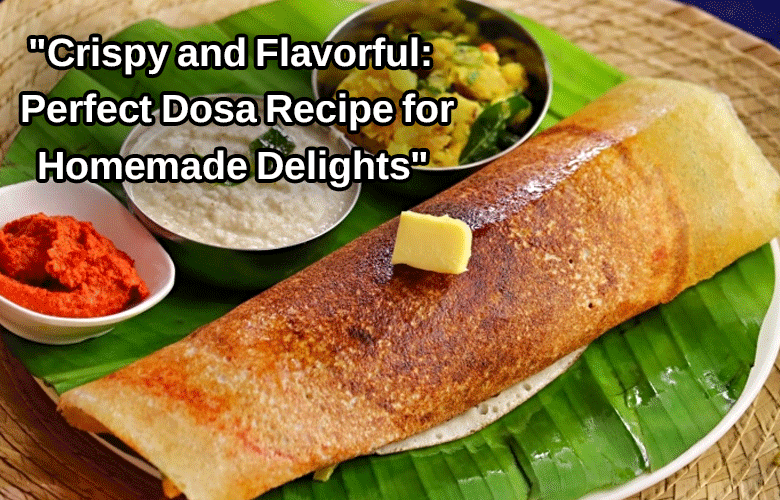Dosa, a beloved Indian delicacy, has charmed its way into the hearts and palates of people around the world. With its crispy texture and versatile appeal, dosa is not just a dish; it’s an experience. Crafting the perfect dosa at home is a culinary adventure that promises a delightful outcome. So, let’s dive into the world of dosas and uncover the art of creating these golden, delectable treats in your own kitchen.
The Quintessential Dosa Batter
The foundation of a great dosa lies in its batter. The dosa batter is a blend of regular rice, urad dal (split black gram), and a touch of fenugreek seeds. This trio creates a harmonious balance of flavors and textures that contribute to the dosa’s distinctive taste.
Soaking and Grinding
- – Begin by rinsing the rice, urad dal, and fenugreek seeds thoroughly and then soaking them separately. Allow them to soak for about 4-6 hours or overnight. The soaking process softens the ingredients and makes them easier to grind.
- – After draining the soaked ingredients, grind the urad dal and fenugreek seeds together to form a smooth, fluffy batter. The key here is to achieve an airy consistency.
- – Next, grind the soaked rice until it reaches a slightly coarse texture, akin to fine semolina. The rice batter should be blended well with the urad dal batter to form a homogenous mixture.
The Magic of Fermentation
Once the batter is prepared, add salt to taste and mix it well. Cover the mixing bowl and let the batter ferment in a warm place for 8-12 hours. Fermentation is crucial, as it lends a tangy flavor to the dosas and aids in achieving their signature texture.
Cooking the Dosa
- – Once the batter is fermented, it’s time to transform it into the iconic dosa. Heat a non-stick or cast-iron skillet (tava) over medium heat and lightly grease it with oil or ghee.
- – Pour a ladleful of dosa batter onto the skillet’s center and use the back of the ladle to spread it in a circular motion. This technique creates the characteristic thin and crispy dosa.
- – Drizzle a few drops of oil or ghee around the edges of the dosa and on top. Cook until the edges turn golden brown and crisp.
- – Carefully flip the dosa over and cook the other side for a minute or so. The result should be a dosa that’s golden, crispy, and inviting.
Serving Suggestions
Dosa’s allure extends beyond its delightful texture. It’s also a versatile canvas for a variety of accompaniments. Traditionally, dosas are served with coconut chutney, sambar (a lentil-based vegetable stew), and/or tangy tomato chutney. For a classic twist, you can opt for the ever-popular masala dosa, which is filled with a flavorful potato masala.
Conclusion
Crafting the perfect dosa is a blend of art and science, a culinary journey that combines the right ingredients, techniques, and a touch of patience. As you master the art of making dosas, you’ll not only be creating a delightful meal but also weaving a tapestry of flavors that celebrate the rich culinary heritage of India. So, gather your ingredients, embrace the process, and savor the joy of creating crispy, flavorful dosas that will undoubtedly leave an indelible mark on your taste buds.
